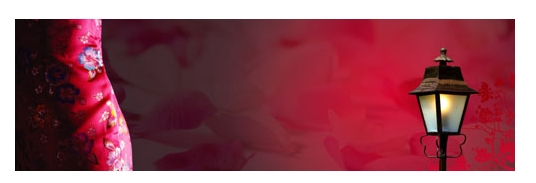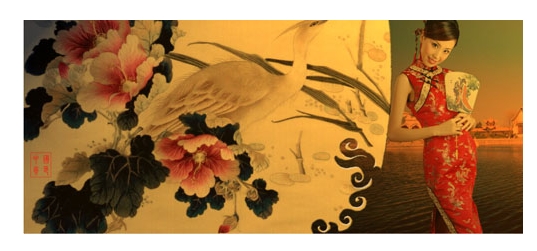Peony
Peony is a very common design for Chinese ladies' clothing. Chinese people love peony since more than 5000 years and it is the most favored flower in China. So peony was choosed as Chinese National Flower. Peony symbolizes richness and prosperity.
Lotus
Chinese people - and other people in the world too - love the Lotus flower. In Tibet even Lotus is a sacred flower. It is worshiped by the people of Tibet because it stands for purity and holiness. In China's culture there is a legend about a Lotus Fairy, an outstanding beautiful and charming lady who always gave a helping hand to people. Lotus symbolizes beauty and purity and so you can find the Lotus motive very often on Chinese clothes.

Chrysanthemum
In Chinese culture Chrysanthemum symbolizes longevity. Therefore Chrysanthemum is another frequently used motive on Chinese clothes for ladies.
Fish
In ancient Chinese culture the fish is a symbol for prosperity: The pronunciation of the corresponding Chinese character sounds "Yu" and this means the same as prosperity. You often can find the fish motive on Chinese clothes to express someone's wish for a future full of prosperity.

Dragon
The (male) dragon is a frequently used motive on clothes of Chinese Mandarin people. Dragon symbolizes "Supreme Power". But not only the Chinese emperor wore dragon motives. There had been some rules about wearing this motive: A facing out head of the dragon marked the initiation of the tradition for the emperor, while the most favored courtiers wore dragons that faced the onlooker. Other noblemen and officials wore profile dragons.
Phoenix
The (female) phoenix was a frequently used motive on Chinese ladies' clothing within the imperial family. Actually the Empress wore Dragon designs often and the Phoenix was worn by imperial concubines, wives of princes and princesses. Other important ladies like wives of dukes, marquises, earls, and first- and second-rank officials wore tartar pheasants motives. The peacock was the motive for wives of third- and fourth-rank officials. The mandarin duck design was for wives of fifth-rank officials. The paradise flycatcher was used as motive for the wives of sixth- and seventh- rank officials. All these are symbols of beauty and purity.
